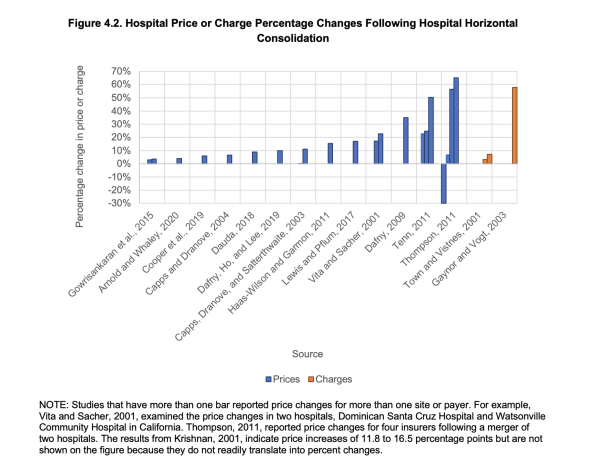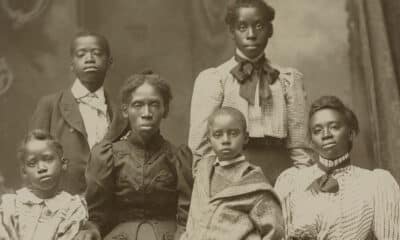Mississippi Today
History’s visual echo
The way a photographer sees the world is just as important as the decisive moment when a finger clicks the shutter. And what the photographer sees enlarges the viewer’s idea of what is a subject worthy of being captured by the camera and seen as art or documentary evidence.
Former Life magazine photographer Gordon Parks saw his work behind a camera as his choice of weapons against racism and social injustice. Posthumously discovered street photographer Vivian Meyer discretely captured images of people with an obsessiveness that speaks not only to what she saw but also her deep desire to be part of a world beyond her invisible work as a governess. Faulkner, Poe, Wordsworth, and Pound are all writers who inform the photography of Sally Mann, and she feels her photographs “sing their words back to them,” creating an alchemy of the visual and the verbal.
Like Sally Mann, the photographs of Doy Gorton capture a piece of the Southern past. There is a stark realistic quality to his photographs, more blank confessional verse than romantic sonnets about the South. Yet if you ask him about them, he will say that his photography is about living in the present, not the past.
“As a photographer, you always live in the present. But then that moment immediately becomes the past,” Gorton said to me one afternoon as I was looking at prints of his photographs on my office floor organized thematically.
His comment leads me to quote Faulkner from his novel “Light in August”: “Memory believes before knowing remembers. Believes longer than recollects, longer than knowing even wonders.” Gorton responded by saying “I’ll never do something as brilliant as Faulkner in trying to describe time and memory. But with me, memory is plastic. It’s real. It’s on a piece of film. It’s not exactly like you’re bringing it out of your mind and you’re writing it on a piece of paper.”
“…with me, memory is plastic. It’s real. It’s on a piece of film.”
Doy Gorton
Although many of us think of a photograph as a record of a particular moment in time, a record of what has been, sometimes a photograph captures history’s echo in the present. The photographs that make up Gorton’s new book “White South” were taken between 1969 and 1970, a time when massive resistance to segregation had begun to crumble. In October 1969, the Supreme Court’s decision in the Alexander v. Holmes County Board of Education case ordered integration in schools in Mississippi. The Holmes decision not only brought about change to the education landscape, but to Mississippi’s social structure as well. It is the change that is looming over white Southerners that Gorton captures with his camera. What is about to change is the meaning of whiteness as a form of social and cultural power.

Historian Grace Elizabeth Hale believes that silence is central to the meaning of whiteness. In her book “Making Whiteness”, Hale notes that the “denial of white as a racial identity, the denial that whiteness has a history, allows the quiet, the blankness, to stand as the norm. This erasure enables many to fuse their absence of racial being with the nation,” thus making whiteness central to what it means to be American. In the world Gorton captures, whiteness is not just central to his subject’s existence as Americans but to their being Southern as well.
The people captured in Gorton’s photographs seem enraptured by the promise of whiteness and the ways they believe it protects them from the harsh realities of the world. It’s an idea you can see in their expressions. The images of men and a family gathered at a George Wallace rally or young children carrying signs promoting “free choice” could very well be present at a Trump rally today. Although the drag races Gorton captures are integrated, the Black men all seem to keep their hands in their pockets, acknowledging the code of behavior that typically governed such interactions. The people gathered all know the racial rules are changing, but they are as of yet unsure of what rules can now be broken or which ones might evolve into something else. As you fix your gaze on Gorton’s images, you may know what happens in the future, but those frozen in the frame are uncertain about what happens next. What you begin to see as you move from image to image is how those same uncertainties Gorton captured more than 50 years ago are very much with us today.

As Gorton moves from streets of small towns into the walls of the state penitentiary at Parchman, he captures segregated groups of prisoners as well as a gun-toting white trusty supervising Black prisoners on horseback. A year after Gorton’s Parchman photographs were made, four prisoners brought the Gates v. Collier case to federal court, charging the prison with brutal conditions that violated the civil rights of prisoners. In 1972 Judge William Keady ordered an end to racial segregation, ended the trusty guard system, upgraded medical care, and made other reforms to the notorious prison that is a known container of cruelty.
Today the trusty system is gone at Mississippi’s oldest prison, but Parchman remains a place of deadly violence. Violence against guards is as much of a problem as inmate violence. So, while the circumstances Gorton captured with his camera inside Parchman have changed over time, the specter of violence has remained constant. Gorton’s images remind us not only of what once was but also of what remains.

Gorton also went inside the state mental hospital at Whitfield, a place that conjures as many images as Parchman. For a child growing up in Mississippi, there was no worse taunt than “they’re going to send you to Whitfield.” The blank faces in stark institutional backgrounds feel as if they could have been taken today — Mississippi is still one of the worst states for access to mental health care — yet their juxtaposition with images of a Delta debutante ball lets the reader know that they were taken in a particular time and place. What Gorton seems to be communicating through this juxtaposition is that the people dressed in black tie and chiffon in 1969 are indifferent to those suffering in the halls of a mental health ward a hundred miles south of them. As I look at these images today, it reminds me that many of us remain indifferent to the suffering of others.

Dorothea Lange famously said that “the camera is an instrument that teaches people how to see without a camera.” In the photographs for “White South” Doy Gorton uses his camera to teach people how to see the ways that whiteness was lived and manifested itself in the lives of all Southerners. It is not as if the world he captured in 1969 and 1970 was hidden behind a veiled mirror. The cars and hairstyles may be different today, made with much less chrome and less hairspray, but much of that world is still with us. It’s just that many of us deny that pieces of the past are still in our midst.
Mississippi is a cultural and emotional touchstone for Doy Gorton, much like Kansas was for Gordon Parks. Gorton grew up in the Delta town of Greenville, the queen city of the Mississippi Delta. When you talk with him about the Delta, you can hear the way that teardrop-shaped piece of land is still very much a part of him, just like Parks never forgot the rolling, windswept prairie that shaped his way of seeing the world.

“I realized at some point that the Mississippi Delta had become an essential concept all around the world,” Gorton told me.
As he traveled the globe as a photographer for the New York Times, he found that people immediately knew the place where he was from but he didn’t think they really understood it.
“People wrote about the Delta a great deal, but they didn’t understand the things that truly stood out about it, the way the Rocky Mountains stand out in Colorado when you approach them from the plains.” Finding those things that stood out about the Delta and Mississippi is what Gorton decided to capture with his camera.
“People wrote about the Delta a great deal, but they didn’t understand the things that truly stood out about it, the way the Rocky Mountains stand out in Colorado when you approach them from the plains.”
Doy Gorton
But it was a complicated journey that led Gorton to take the photographs that grace the pages of his book “White South”. First, he attended the University of Mississippi, where he pledged the Kappa Alpha fraternity, the Old South fraternity that has Confederate Gen. Robert E. Lee as its spiritual founder. Gorton was at the university when James Meredith was admitted and was so shaken by what happened that he left school and began to wander, first to Florida, then the Bahamas, and eventually to Boston. With newfound friends in Boston he boarded a bus to the 1963 March on Washington. After meeting members of the Student Nonviolent Coordinating Committee, including John Lewis and Fannie Lou Hamer, Gorton was inspired by the courage of the people of the civil rights movement. He returned to the University of Mississippi, determined to start a progressive student movement.
The Mississippi State Sovereignty Commission infiltrated his student group, which led Gorton to deeper involvement with SNCC during Freedom Summer and eventually into Students for a Democratic Society, where he founded SDS Photo. Photography was a way for the SDS to get the organization’s pro-civil rights and anti-Vietnam War message out to the public. During his time at SDS Photo, Gorton became obsessed with the work of German photographer August Sandler, Swiss photographer Robert Frank and American photographer Walker Evans. It was this obsession with the work of these photographers that influenced the photographs he took in Mississippi between 1969 and 1970.

When Gorton decided to photograph what he describes as the White South, his work was informed by his “unique personal knowledge of the South, civil rights, radical feminism, gay right, and white supremacy” as well as his knowledge of class and caste as a son of the Mississippi Delta. Although this is not a photography book about the Delta, what these pictures capture is the way Gorton sought to understand the way whiteness was lived in the South through the lens of someone raised in the Delta and who understood how whiteness was ingrained into the social structures of the South.
As Gorton told me, “I knew the social codes of behavior and what things looked like. I was also raised to understand power and how to maintain power.” What Gorton did was use the power of his whiteness to capture what he knew he was witnessing: the last days of the last generation to live under state-sponsored segregation.
“As a photographer, you always live in the present. But then that moment immediately becomes the past.”
Doy Gorton
Although he knew what he was documenting, he wasn’t trying to come up with a coherent message. “I wasn’t trying to build a moral case of any kind. I just tried to photograph history. But a photograph is something of the present, of that moment only. I believed I could shoot the past. I honest to God believed it.”

Now, all these years later, as these images come into book form, looking back at them Gorton is capturing the missing voice in the text that accompanies his images, some of it in his own words others in the voice of Jane Adams, the cultural anthropologist who serves as his co-author on “White South”. Both of them realize that the photographs capture a specific moment that they are trying to speak to. But they also acknowledge something cultural critic Susan Sontag observed about historical images: “Even those photographs which speak so laceratingly of a specific historical moment also give us vicarious possession of their subjects under the aspect of a kind of eternity: the beautiful.” And the images in “White South” all possess a sort of haunting bleak beauty.
Doy Gorton’s “White South” holds much in common with two books that define modern photography: “Let Us Now Praise Famous Men” by Walker Evans and James Agee and “The Americans” by Robert Frank. A commercial disaster when it was published in 1941, “Let Us Now Praise Famous Men” is now considered one of the great works of nonfiction of the 20th Century. In Gorton’s image of the battlefield monument at Vicksburg, with the Confederate officer with his horse and upturned sword, he is paying homage to Walker Evans’ photography, since he photographed the same statue in 1936. Gorton captures what Evans called “the progression of the delight of seeing” as well as observations of a place, full and felt.

Like Evans’ co-author James Agee, Gorton understands that the essential structure of the South is economic. One photograph in particular speaks to that economic structure: the young widow of the Vietnam war who lives in a shotgun shack in Chatam, Mississippi. The shack looks like those Evans captured in Hale County, Alabama, leading James Agee to observe that the American South was a place “run on intuition, and the structures of intuition are as delicate as they can only be in a society which is not merely one thing but two: a dizzying mixture of feudalism and of capitalism in its later stages.”

Like Robert Frank’s “The Americans”, Gorton’s “White South” is book that is personal, poetic and real. What Frank sought to do in “The Americans” was to reveal an America that had gone unacknowledged in the pages of magazines such as Life, in which publisher Henry Luce sought to construct a visual idea of American exceptionalism. In 83 black-and-white photographs, Frank urged his readers to confront the underbelly of racial inequality, corruption and justice as well as question who has access to the American Dream. As Jack Kerouac, the author of the Beat Generation novel “On the Road”, wrote in the introduction to the 1959 edition of “The Americans”, “Robert Frank…he sucked a sad poem right out of America onto film, taking rank among the tragic poets of the world.”
In “White South”, Gorton is seeking to do the same thing that Kerouac described, except rather than with the 1950s jazz rhythm Kerouac evokes, he is seeking to create one long continuous blues song with his images, evoking his native Delta and a music that many of the White Southerners he captured on film would not think had anything to do with their lives. Gorton captures a past reality yet he is seeking to evoke some realities of the present while exposing a piece of the past.
“White South” presses its readers to ask themselves many questions, but I think of two in particular that it forced me to ponder: What is it that made whiteness so powerful in the past that the forces of white supremacy are still so present today? And what structures need to become part of the social glue of our society today to make it more equitable? In the photographs in “White South”, you can see the outlines of the answers to these questions. The past can indeed echo what we must do in the present.
“White South” is being published by Fall Line Press. to pre-order a copy go to: https://falllinepress.com/products/doy-gortons-white-south-1969-70-with-jane-adams
This article first appeared on Mississippi Today and is republished here under a Creative Commons license.![]()
Mississippi Today
If Tate Reeves calls a tax cut special session, Senate has the option to do nothing

An illness is spreading through the Mississippi Capitol: special session fever.
Speculation is rampant that Gov. Tate Reeves will call a special session if the Senate does not acquiesce to his and the House leadership’s wishes to eliminate the state personal income tax.
Reeves and House leaders are fond of claiming that the about 30% of general fund revenue lost by eliminating the income tax can be offset by growth in other state tax revenue.
House leaders can produce fancy charts showing that the average annual 3% growth rate in state revenue collections can more than offset the revenue lost from a phase out of the income tax.
What is lost in the fancy charts is that the historical 3% growth rate in state revenue includes growth in the personal income tax, which is the second largest source of state revenue. Any growth rate will entail much less revenue if it does not include a 3% growth in the income tax, which would be eliminated if the governor and House leaders have their way. This is important because historically speaking, as state revenue grows so does the cost of providing services, from pay to state employees, to health care costs, to transportation costs, to utility costs and so on.
This does not even include the fact that historically speaking, many state entities providing services have been underfunded by the Legislature, ranging from education to health care, to law enforcement, to transportation. Again, the list goes on and on.
And don’t forget a looming $25 billion shortfall in the state’s Public Employee Retirement System that could create chaos at some point.
But should the Senate not agree to the elimination of the income tax and Reeves calls a special session, there will be tremendous pressure on the Senate leadership, particularly Lt. Gov. Delbert Hosemann, the chamber’s presiding officer.
Generally speaking, a special session will provide more advantages for the eliminate-the-income-tax crowd.
First off, it will be two against one. When the governor and one chamber of the Legislature are on the same page, it is often more difficult for the other chamber to prevail.
The Mississippi Constitution gives the governor sole authority to call a special session and set an agenda. But the Legislature does have discretion in how that agenda is carried out.
And the Legislature always has the option to do nothing during the special session. Simply adjourn and go home is an option.
But the state constitution also says if one chamber is in session, the other house cannot remain out of session for more than three days.
In other words, theoretically, the House and governor working together could keep the Senate in session all year.
In theory, senators could say they are not going to yield to the governor’s wishes and adjourn the special session. But if the House remained in session, the Senate would have to come back in three days. The Senate could then adjourn again, but be forced to come back if the House stubbornly remained in session.
The process could continue all year.
But in the real world, there does not appear to be a mechanism — constitutionally speaking — to force the Senate to come back. The Mississippi Constitution does say members can be “compelled” to attend a session in order to have a quorum, but many experts say that language would not be relevant to make an entire chamber return to session after members had voted to adjourn.
In the past, one chamber has failed to return to the Capitol and suffered no consequences after the other remained in session for more than three days.
As a side note, the Mississippi Constitution does give the governor the authority to end a special session should the two chambers not agree on adjournment. In the early 2000s, then-Gov. Ronnie Musgrove ended a special session when the House and Senate could not agree on a plan to redraw the state’s U.S. House districts to adhere to population shifts found by the U.S. Census.
But would Reeves want to end the special session without approval of his cherished income tax elimination plan?
Probably not.
In 2002 there famously was an 82-day special session to consider proposals to provide businesses more protection from lawsuits. No effort was made to adjourn that session. It just dragged on until the House finally agreed to a significant portion of the Senate plan to provide more lawsuit protection.
In 1969, a special session lasted most of the summer when the Legislature finally agreed to a proposal of then-Gov. John Bell Williams to opt into the federal Medicaid program.
In both those instances, those wanting something passed — Medicaid in the 1960s and lawsuit protections in the 2000s — finally prevailed.
This article first appeared on Mississippi Today and is republished here under a Creative Commons license.![]()
Mississippi Today
On this day in 1898

Feb. 22, 1898

Frazier Baker, the first Black postmaster of the small town of Lake City, South Carolina, and his baby daughter, Julia, were killed, and his wife and three other daughters were injured when a lynch mob attacked.
When President William McKinley appointed Baker the previous year, local whites began to attack Baker’s abilities. Postal inspectors determined the accusations were unfounded, but that didn’t halt those determined to destroy him.
Hundreds of whites set fire to the post office, where the Bakers lived, and reportedly fired up to 100 bullets into their home. Outraged citizens in town wrote a resolution describing the attack and 25 years of “lawlessness” and “bloody butchery” in the area.
Crusading journalist Ida B. Wells wrote the White House about the attack, noting that the family was now in the Black hospital in Charleston “and when they recover sufficiently to be discharged, they) have no dollar with which to buy food, shelter or raiment.
McKinley ordered an investigation that led to charges against 13 men, but no one was ever convicted. The family left South Carolina for Boston, and later that year, the first nationwide civil rights organization in the U.S., the National Afro-American Council, was formed.
In 2019, the Lake City post office was renamed to honor Frazier Baker.
“We, as a family, are glad that the recognition of this painful event finally happened,” his great-niece, Dr. Fostenia Baker said. “It’s long overdue.”
This article first appeared on Mississippi Today and is republished here under a Creative Commons license.![]()
Mississippi Today
Memorial Health System takes over Biloxi hospital, what will change?

by Justin Glowacki with contributions from Rasheed Ambrose, Javion Henry, McKenna Klamm, Matt Martin and Aidan Tarrant
BILOXI – On Feb. 1, Memorial Health System officially took over Merit Health Biloxi, solidifying its position as the dominant healthcare provider in the region. According to Fitch Ratings, Memorial now controls more than 85% of the local health care market.
This isn’t Memorial’s first hospital acquisition. In 2019, it took over Stone County Hospital and expanded services. Memorial considers that transition a success and expects similar results in Biloxi.
However, health care experts caution that when one provider dominates a market, it can lead to higher prices and fewer options for patients.
Expanding specialty care and services

One of the biggest benefits of the acquisition, according to Kristian Spear, the new administrator of Memorial Hospital Biloxi, will be access to Memorial’s referral network.
By joining Memorial’s network, Biloxi patients will have access to more services, over 40 specialties and over 100 clinics.
“Everything that you can get at Gulfport, you will have access to here through the referral system,” Spear said.
One of the first improvements will be the reopening of the Radiation Oncology Clinic at Cedar Lake, which previously shut down due to “availability shortages,” though hospital administration did not expand on what that entailed.
“In the next few months, the community will see a difference,” Spear said. “We’re going to bring resources here that they haven’t had.”
Beyond specialty care, Memorial is also expanding hospital services and increasing capacity. Angela Benda, director of quality and performance improvement at Memorial Hospital Biloxi, said the hospital is focused on growth.
“We’re a 153-bed hospital, and we average a census of right now about 30 to 40 a day. It’s not that much, and so, the plan is just to grow and give more services,” Benda said. “So, we’re going to expand on the fifth floor, open up more beds, more admissions, more surgeries, more provider presence, especially around the specialties like cardiology and OB-GYN and just a few others like that.”
For patient Kenneth Pritchett, a Biloxi resident for over 30 years, those changes couldn’t come soon enough.

Pritchett, who was diagnosed with congestive heart failure, received treatment at Merit Health Biloxi. He currently sees a cardiologist in Cedar Lake, a 15-minute drive on the interstate. He says having a cardiologist in Biloxi would make a difference.
“Yes, it’d be very helpful if it was closer,” Pritchett said. “That’d be right across the track instead of going on the interstate.”
Beyond specialty services and expanded capacity, Memorial is upgrading medical equipment and renovating the hospital to improve both function and appearance. As far as a timeline for these changes, Memorial said, “We are taking time to assess the needs and will make adjustments that make sense for patient care and employee workflow as time and budget allow.”
Unanswered questions: insurance and staffing
As Memorial Health System takes over Merit Health Biloxi, two major questions remain:
- Will patients still be covered under the same insurance plans?
- Will current hospital staff keep their jobs?
Insurance Concerns
Memorial has not finalized agreements with all insurance providers and has not provided a timeline for when those agreements will be in place.
In a statement, the hospital said:
“Memorial recommends that patients contact their insurance provider to get their specific coverage questions answered. However, patients should always seek to get the care they need, and Memorial will work through the financial process with the payers and the patients afterward.”
We asked Memorial Health System how the insurance agreements were handled after it acquired Stone County Hospital. They said they had “no additional input.”
What about hospital staff?
According to Spear, Merit Health Biloxi had around 500 employees.
“A lot of the employees here have worked here for many, many years. They’re very loyal. I want to continue that, and I want them to come to me when they have any concerns, questions, and I want to work with this team together,” Spear said.
She explained that there will be a 90-day transitional period where all employees are integrated into Memorial Health System’s software.
“Employees are not going to notice much of a difference. They’re still going to come to work. They’re going to do their day-to-day job. Over the next few months, we will probably do some transitioning of their computer system. But that’s not going to be right away.”
The transition to new ownership also means Memorial will evaluate how the hospital is operated and determine if changes need to be made.
“As we get it and assess the different workflows and the different policies, there will be some changes to that over time. Just it’s going to take time to get in here and figure that out.”
During this 90-day period, Erin Rosetti, Communications Manager at Memorial Health System said, “Biloxi employees in good standing will transition to Memorial at the same pay rate and equivalent job title.”
Kent Nicaud, President and CEO of Memorial Health System, said in a statement that the hospital is committed to “supporting our staff and ensuring they are aligned with the long-term vision of our health system.”
What research says about hospital consolidations
While Memorial is promising improvements, larger trends in hospital mergers raise important questions.
Research published by the Rand Corporation, a nonprofit, nonpartisan research organization, found that research into hospital consolidations reported increased prices anywhere from 3.9% to 65%, even among nonprofit hospitals.

The impact on patient care is mixed. Some studies suggest merging hospitals can streamline services and improve efficiency. Others indicate mergers reduce competition, which can drive up costs without necessarily improving care.
When asked about potential changes to the cost of care, hospital leaders declined to comment until after negations with insurance companies are finalized, but did clarify Memorial’s “prices are set.”
“We have a proven record of being able to go into institutions and transform them,” said Angie Juzang, Vice President of Marketing and Community Relations at Memorial Health System.
When Memorial acquired Stone County Hospital, it expanded the emergency room to provide 24/7 emergency room coverage and renovated the interior.
When asked whether prices increased after the Stone County acquisition, Memorial responded:
“Our presence has expanded access to health care for everyone in Stone County and the surrounding communities. We are providing quality healthcare, regardless of a patient’s ability to pay.”
The response did not directly address whether prices went up — leaving the question unanswered.
The bigger picture: Hospital consolidations on the rise
According to health care consulting firm Kaufman Hall, hospital mergers and acquisitions are returning to pre-pandemic levels and are expected to increase through 2025.
Hospitals are seeking stronger financial partnerships to help expand services and remain stable in an uncertain health care market.

Source: Kaufman Hall M&A Review
Proponents of hospital consolidations argue mergers help hospitals operate more efficiently by:
- Sharing resources.
- Reducing overhead costs.
- Negotiating better supply pricing.
However, opponents warn few competitors in a market can:
- Reduce incentives to lower prices.
- Slow wage increases for hospital staff.
- Lessen the pressure to improve services.
Leemore Dafny, PhD, a professor at Harvard and former deputy director for health care and antitrust at the Federal Trade Commission’s Bureau of Economics, has studied hospital consolidations extensively.
In testimony before Congress, she warned: “When rivals merge, prices increase, and there’s scant evidence of improvements in the quality of care that patients receive. There is also a fair amount of evidence that quality of care decreases.”
Meanwhile, an American Hospital Association analysis found consolidations lead to a 3.3% reduction in annual operating expenses and a 3.7% reduction in revenue per patient.
This article first appeared on Mississippi Today and is republished here under a Creative Commons license.![]()
-

 News from the South - Louisiana News Feed2 days ago
News from the South - Louisiana News Feed2 days agoJeff Landry’s budget includes cuts to Louisiana’s domestic violence shelter funding
-

 News from the South - North Carolina News Feed6 days ago
News from the South - North Carolina News Feed6 days agoModest drops in some North Carolina prices under Trump | North Carolina
-

 News from the South - North Carolina News Feed2 days ago
News from the South - North Carolina News Feed2 days agoBills from NC lawmakers expand gun rights, limit cellphone use
-

 News from the South - Arkansas News Feed6 days ago
News from the South - Arkansas News Feed6 days agoTiming out the incoming winter weather
-

 News from the South - Oklahoma News Feed5 days ago
News from the South - Oklahoma News Feed5 days agoRemains of Aubrey Dameron found, family gathers in her honor
-

 News from the South - Kentucky News Feed7 days ago
News from the South - Kentucky News Feed7 days agoEight die in flooding across Kentucky as rescues continue, governor warns of ‘wild weather week’
-

 News from the South - Florida News Feed6 days ago
News from the South - Florida News Feed6 days agoExpert discusses how deportations could cause labor shortages for several industries
-

 Mississippi Today6 days ago
Mississippi Today6 days agoMississippi could face health research funding cuts under Trump administration policy










































